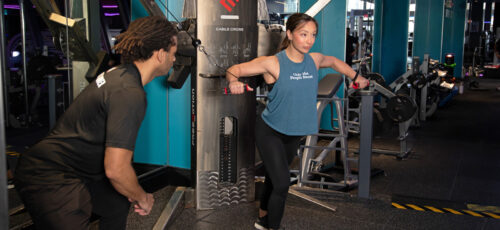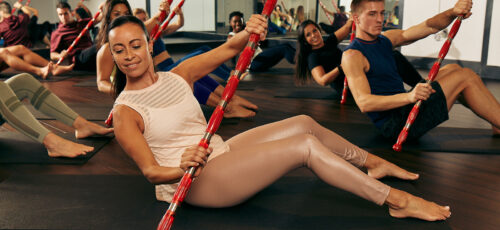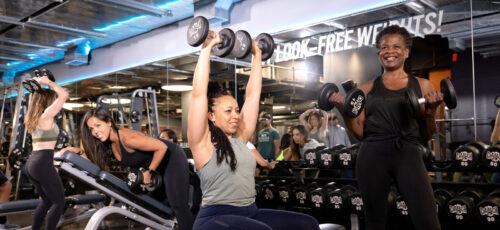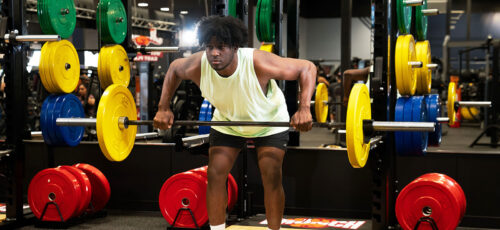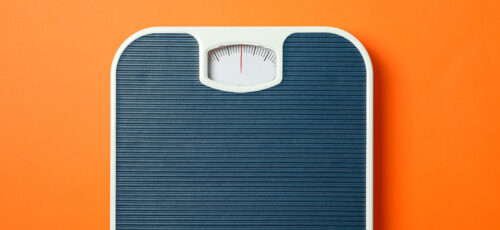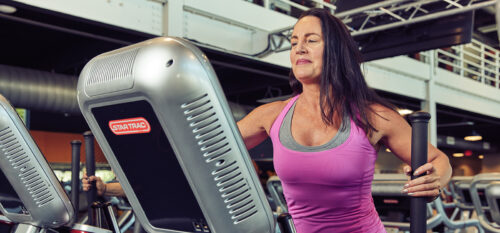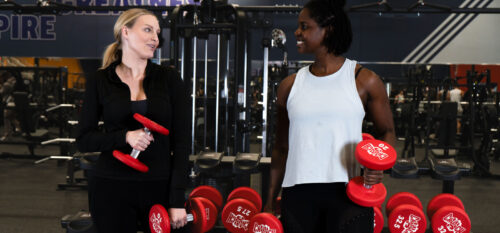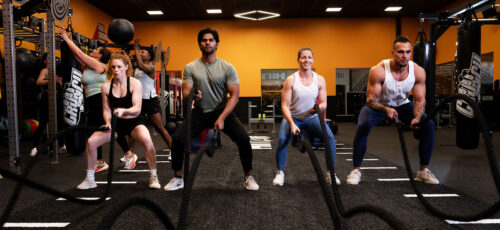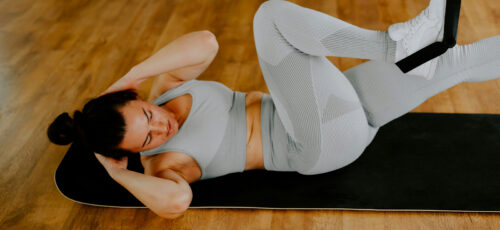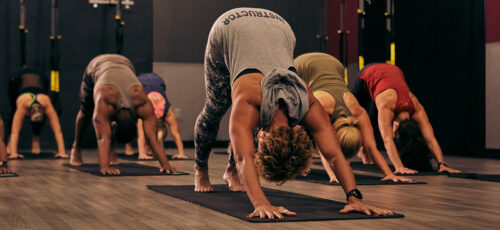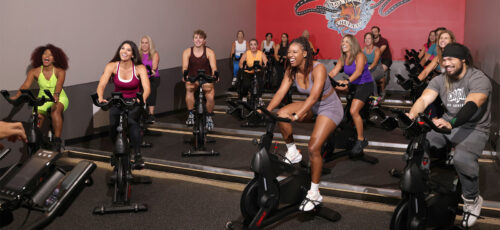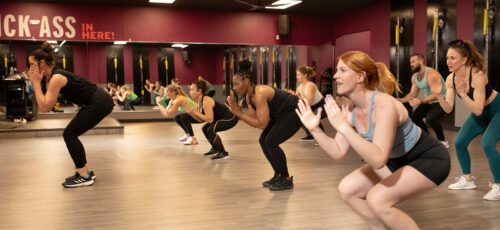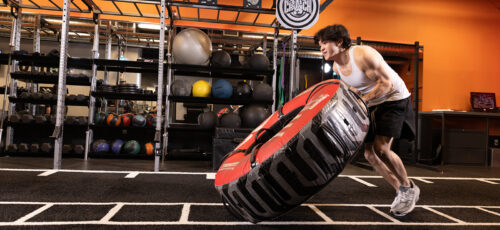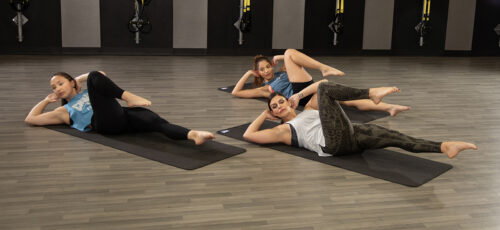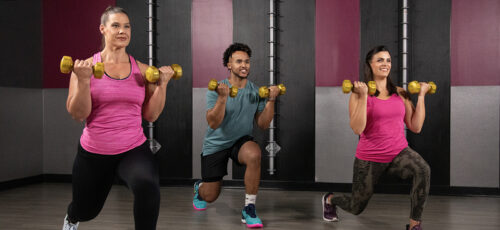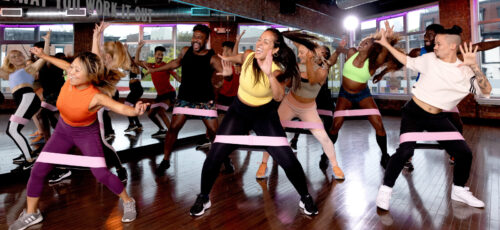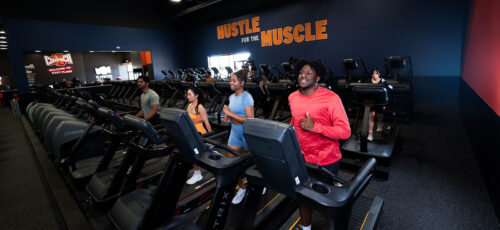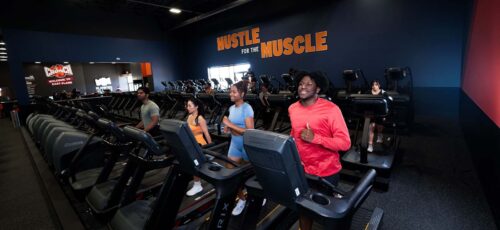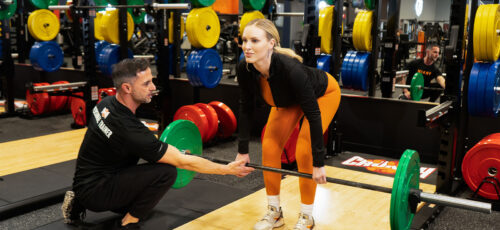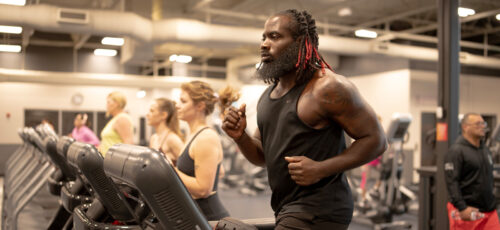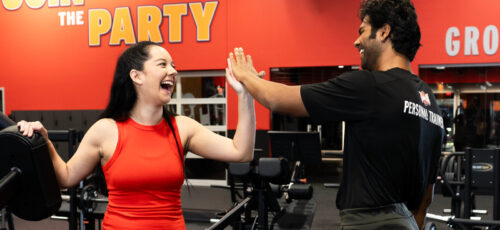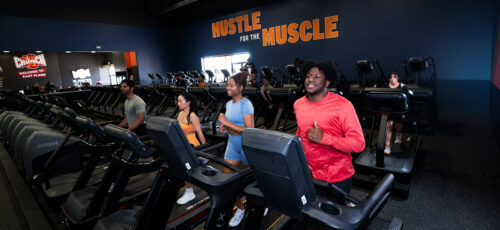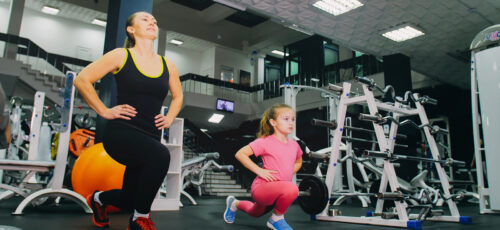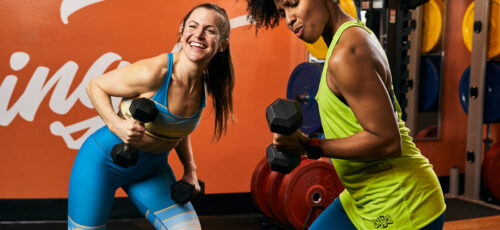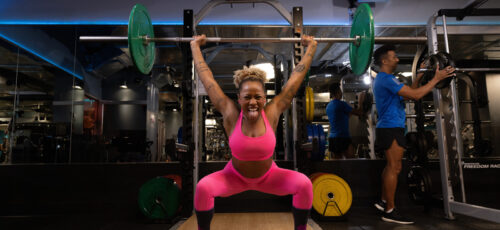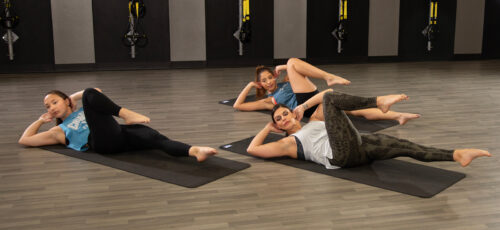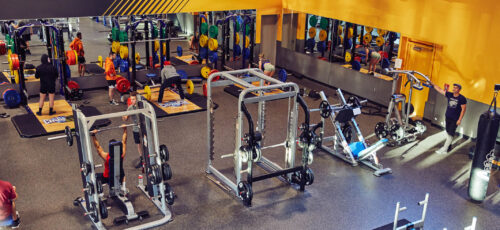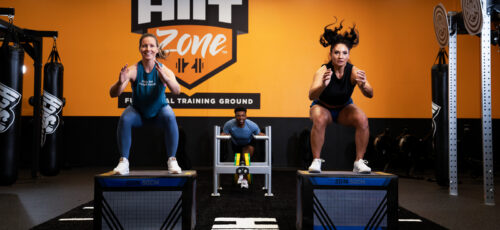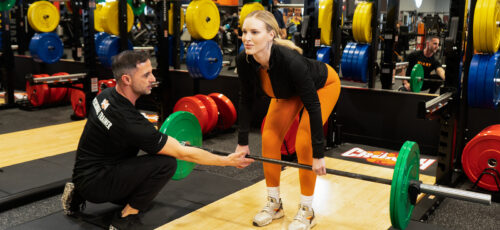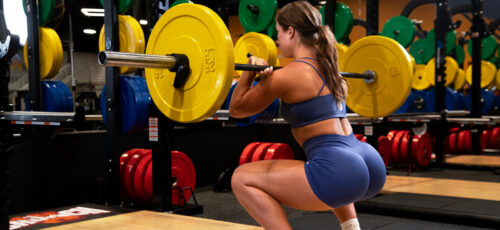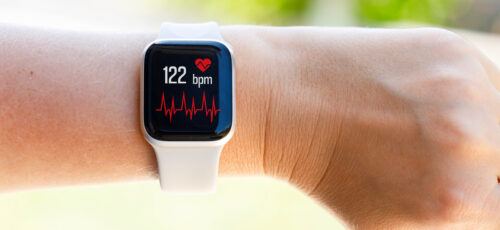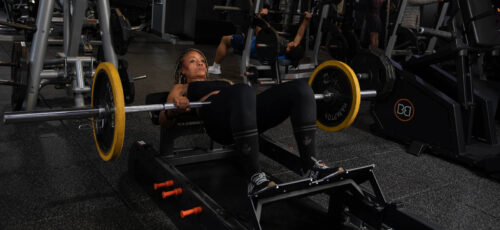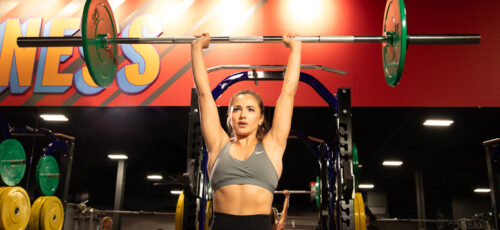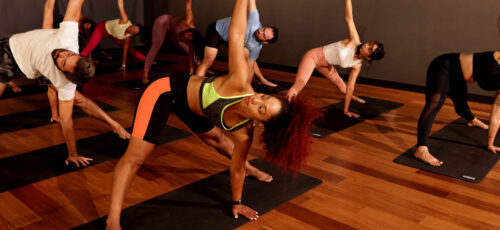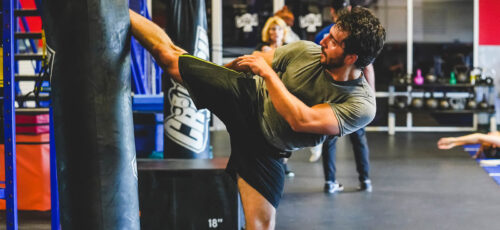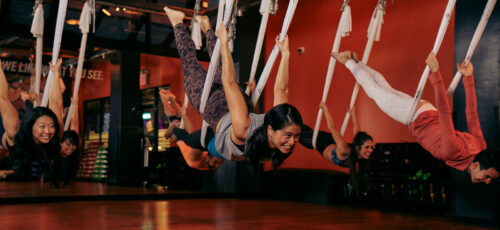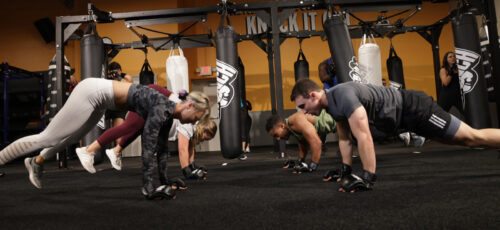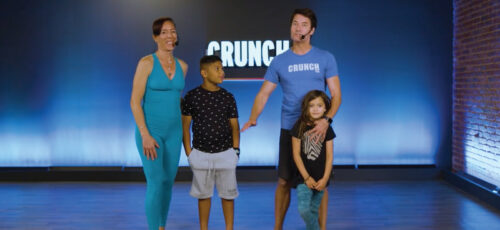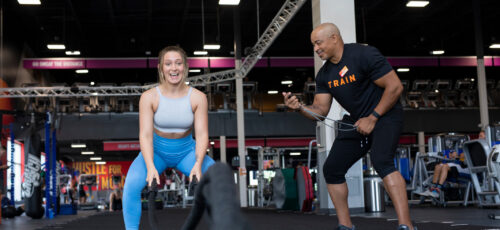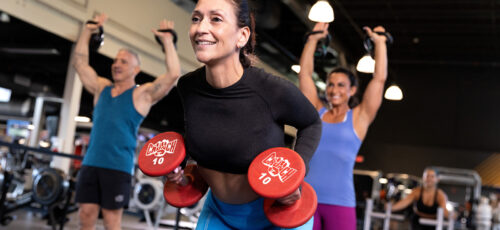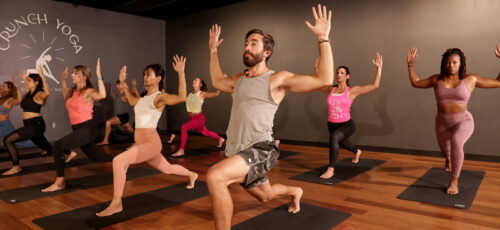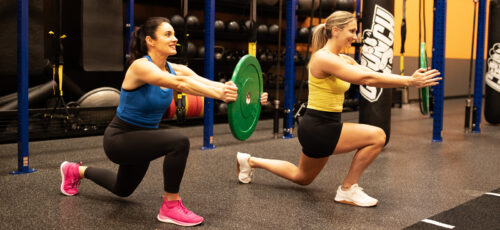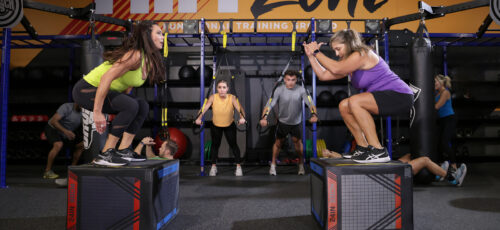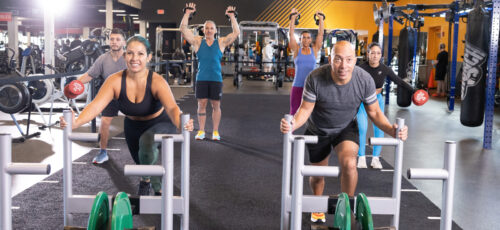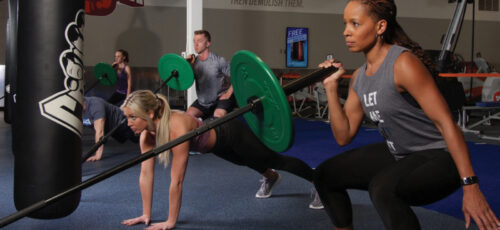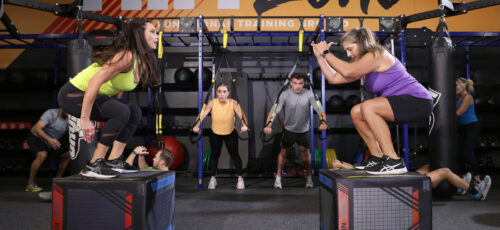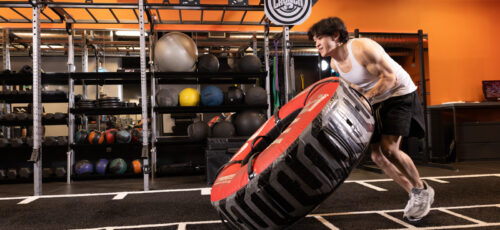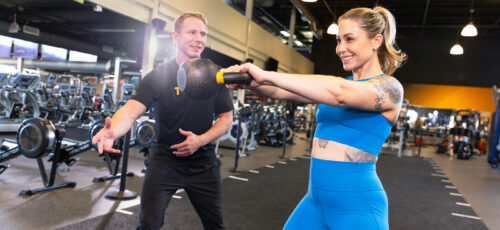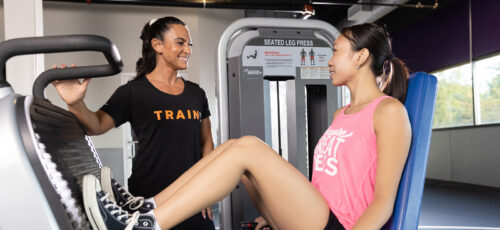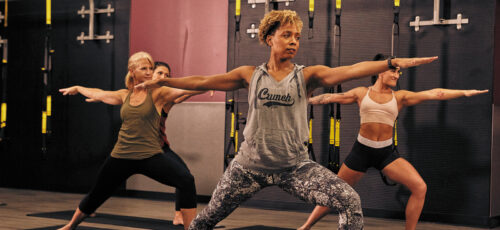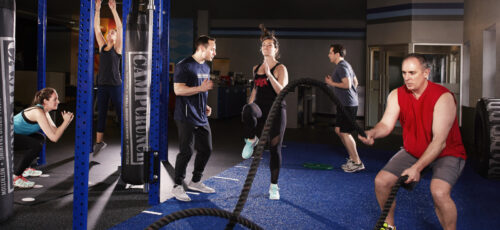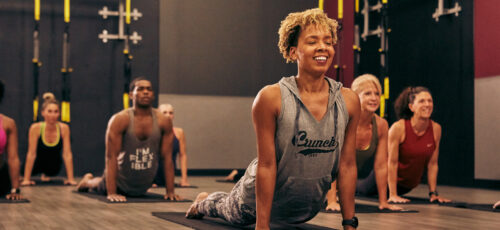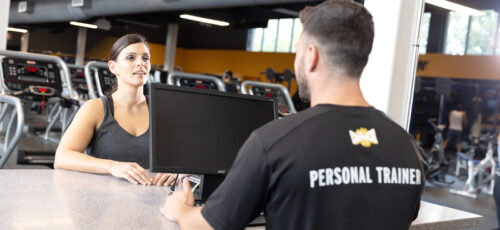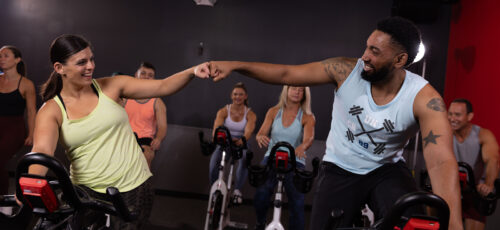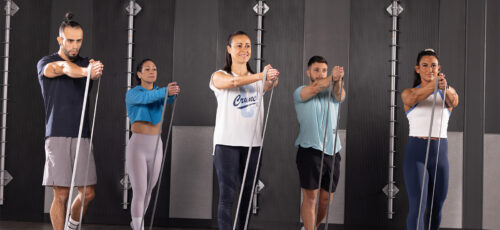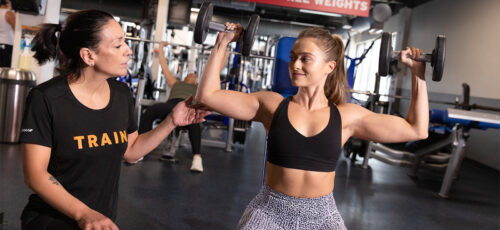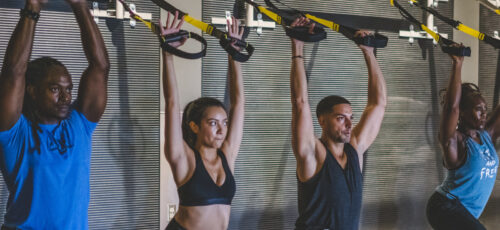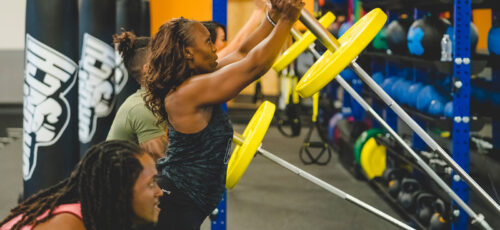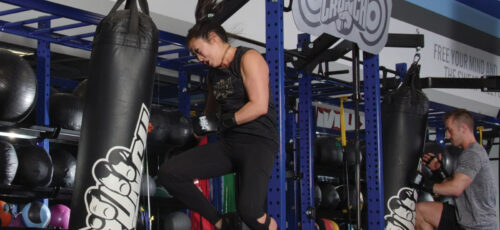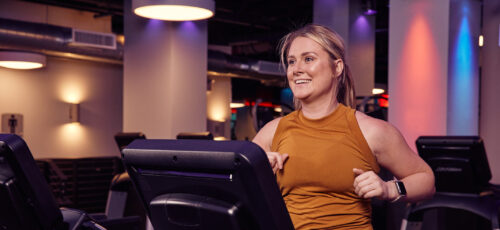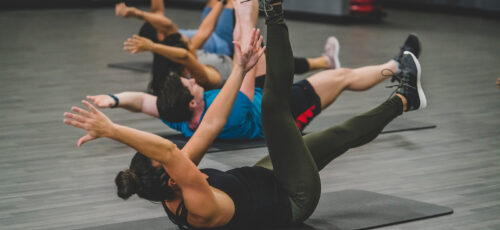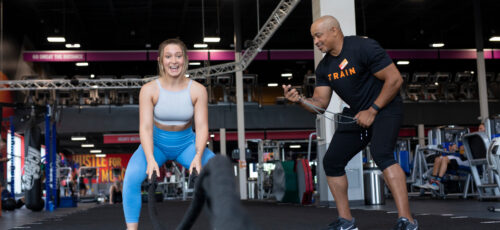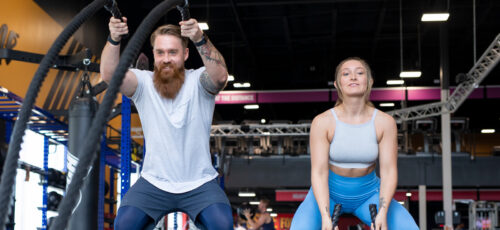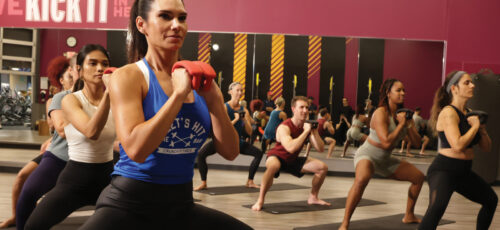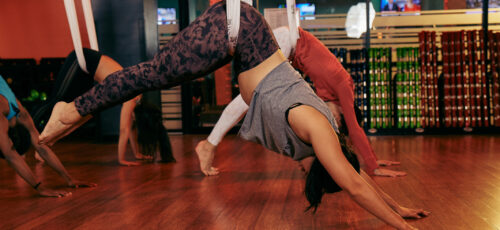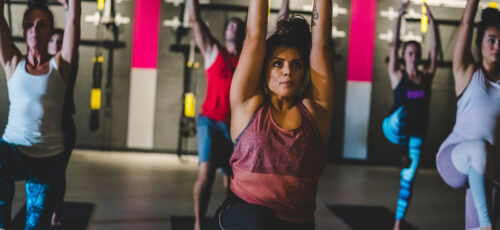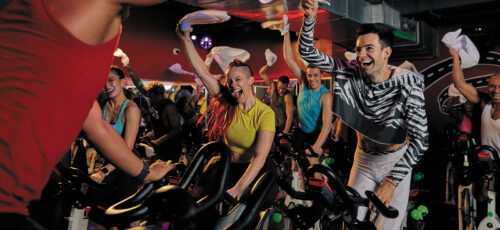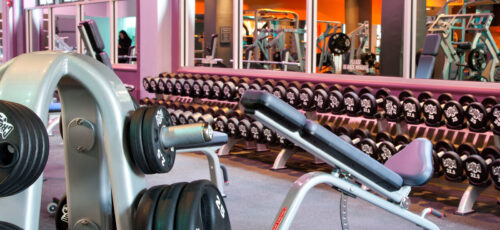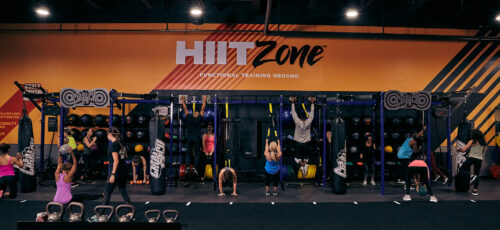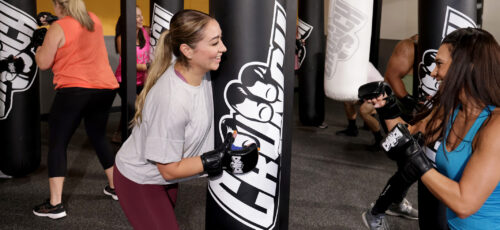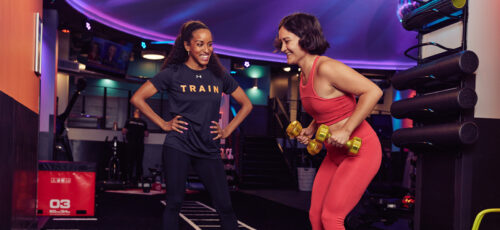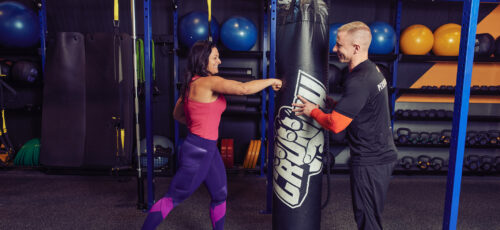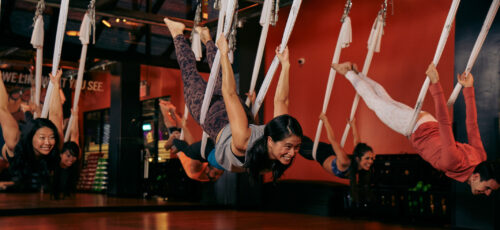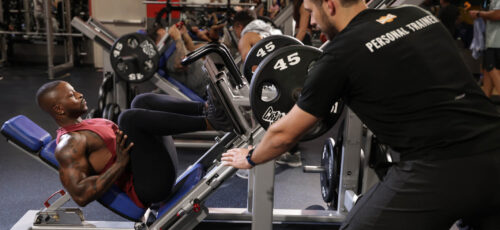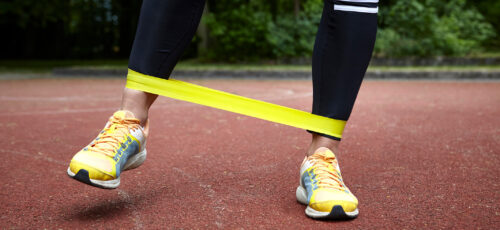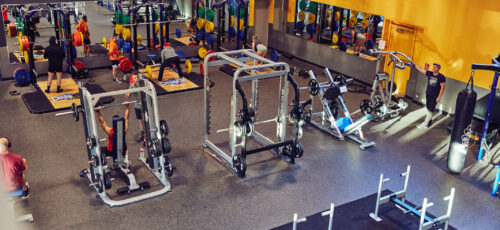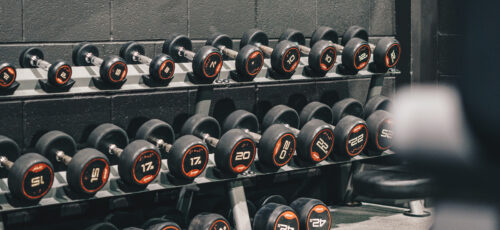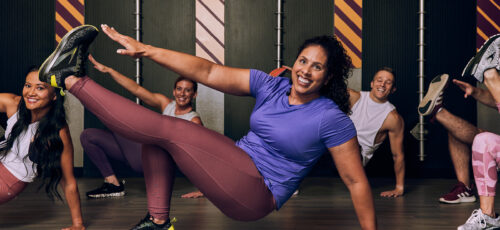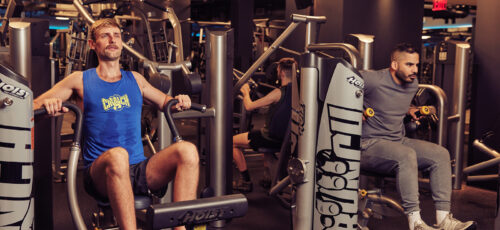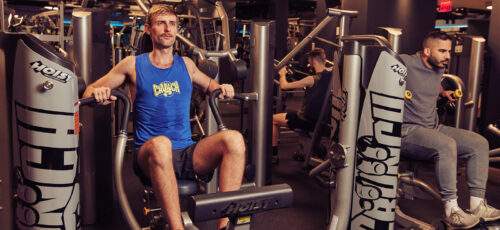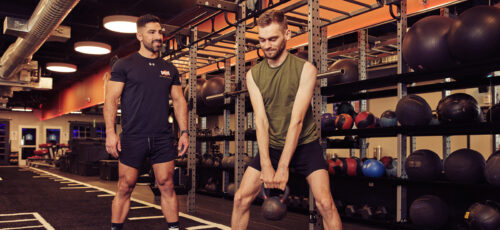
If you’ve ever asked yourself, “Does running really help with weight loss?” The answer is a breathless but solid yes.
Running is one of the most effective ways to burn calories, and it keeps your metabolism humming so your body continues burning fat even after you’ve racked up the miles (or minutes on the treadmill). Basically, it’s the ultimate two-for-one deal in fitness.
The best part? Running is one of the most accessible forms of aerobic exercise. You don’t need to be a marathoner or even own fancy shoes to get started.
Whether you’re jogging, mixing in brisk walking, or trying out interval running for fat loss, you’re building a healthier body and working toward a healthy weight. Add in a balanced diet, and you’ve got yourself a recipe for success.
At Crunch Fitness, we make running even easier to stick with. From rows of treadmills to personal trainers who can create a custom weight loss plan just for you, running becomes less intimidating and a whole lot more fun. We’ll help you balance your running program with strength training exercises so you get results without burnout.
So yes, running helps you lose weight, but that’s just the beginning. Keep reading to find out how running fits into your weight loss journey, and why Crunch might just be the perfect place to start.
Running for Weight Loss: Why It Works

Running is often the go-to recommendation for people who want to lose weight, and for good reason. It has been scientifically proven to be one of the most effective exercises for weight loss, thanks to its high caloric expenditure and powerful metabolic impact.
A study published in the International Journal of Obesity found that running not only burns more calories per minute than many other forms of exercise but also promotes greater fat reduction over time compared to walking.
Another study noted that consistent running leads to improvements in body composition and long-term weight management, making it a cornerstone for those aiming to reach a healthy weight.
By engaging multiple muscle groups and elevating your heart rate, running maximizes fat burning while improving cardiovascular health.
How Many Calories Does Running Burn?
One of the biggest reasons running is suggested for weight loss is its unmatched calorie-burning potential. Depending on your pace, body weight, and terrain, running can burn anywhere from 300 to over 1,000 calories per hour.
For example, a 155-pound person running at a 5 mph pace (equivalent to a 12-minute mile) burns approximately 600 calories in an hour. In comparison, the same person running at 7.5 mph (an 8-minute mile) may burn closer to 930 calories. This high expenditure creates the caloric deficit essential for sustainable weight loss.
At Crunch Fitness, personal trainers design custom programs that include steady jogging, interval running for fat loss, or even treadmill-based workouts. Even if you’ve never run before—or think it’s “too hard”—Crunch coaches can guide you step by step.
Running and the Afterburn Effect
Another reason running is a top pick? The afterburn effect. High-intensity running elevates EPOC (Excess Post-Exercise Oxygen Consumption), meaning your body continues to burn calories hours after your workout is over. The harder the run, like sprints or intervals, the greater the afterburn. This extended calorie burn accelerates fat loss and enhances the efficiency of your workouts.
Running’s Impact on Metabolism
Finally, running doesn’t just burn calories during workouts; it transforms your metabolism. Regular running increases metabolic rate both during exercise and at rest. Over time, it also helps build lean muscle mass, which in turn helps your body burn more calories throughout the day.
Consistent running improves metabolic flexibility and insulin sensitivity, making your body more efficient at using fat as fuel. Crunch Fitness trainers combine running with strength training exercises to help members boost metabolism, reduce body fat, and achieve long-lasting results.
Calories Burned by Running Pace (Per Hour – Based on a 155 lb Person)
| Running Pace | Speed (mph) | Calories Burned Per Hour | Equivalent Workout Example |
| Jogging | 5 mph (12 min/mile) | ~600 calories | Easy treadmill jog |
| Moderate Run | 6 mph (10 min/mile) | ~740 calories | Steady outdoor run |
| Faster Run | 7.5 mph (8 min/mile) | ~930 calories | 5K race pace |
| Intense Run | 9 mph (6:40 min/mile) | ~1,100 calories | Interval training or sprints |
Different Types of Running for Weight Loss

There’s no “one-size-fits-all” approach to running for weight loss. The beauty of running is that you can tailor it to your fitness level, preferences, and goals.
Different strategies deliver unique benefits, and mixing them into your running program helps you lose weight and keeps workouts fun and engaging. Variety is key to avoiding plateaus and staying motivated on your weight loss journey.
Steady-State Running
Steady-state running means keeping a consistent, moderate pace for an extended period, think of it as jogging’s reliable older sibling. It’s a fantastic choice for beginners because it helps build stamina, endurance, and confidence.
The health benefits extend beyond just losing body fat: steady-state running strengthens your heart, improves aerobic capacity, and teaches your body how to utilize energy efficiently. For anyone working toward a healthy weight, this method lays a strong foundation.
High-Intensity Interval Running (HIIT)
If you’re short on time but still want big results, HIIT running is a game-changer. By alternating between all-out sprints and active recovery, you can torch 25–30% more calories than steady-state running in less time.
This type of workout also ramps up the afterburn effect, meaning you’ll continue burning fat long after your session ends. At Crunch, you can take things up a notch in our HIIT Zone, where expert coaches guide you through high-intensity workouts designed to maximize calorie burn and keep you motivated.
Incline and Hill Running
Do you want to feel the burn (in a good way)? Try incline running. Tackling hills, or simulating them on a treadmill, can increase calorie burn by 30–50% compared to running on flat ground.
It also recruits different muscle groups, especially the glutes, hamstrings, and calves, giving your lower body extra shape and strength. With Crunch’s incline treadmills, you don’t have to wait for perfect weather or safe conditions outside; you can get the benefits of hill running any time of year.
Read our article: Top Best Fat Burning Treadmill Workouts You Need to Try
How Often and How Long Should You Run to Lose Weight?

The right running frequency and duration really depend on your current fitness level, goals, and the amount of recovery time your body needs.
Running every day might sound tempting when you’re eager to lose weight. Still, proper programming is essential to avoid burnout, injury, or simply losing motivation.
Beginner Running Schedule
If you’re new to running, less is more. A great starting point is three runs per week, each lasting approximately 20–30 minutes, with alternating rest days or light activities, such as walking or stretching.
This gradual approach helps your body adapt, reduces your risk of injury, and builds sustainable habits that keep your weight loss journey enjoyable. Crunch’s beginner-friendly treadmills make it easy to ease in without pressure.
Intermediate Running Progression
Once you’re comfortable with your pace, level up to 4–5 runs per week, lasting 30–45 minutes. This step increases total calorie burn while giving you flexibility to mix steady runs, intervals, or treadmill incline sessions. Adding variety at this stage keeps things exciting and maximizes fat-burning potential.
Advanced Running for Maximum Results
For experienced runners, 5–6 runs per week with varying intensities and distances can deliver powerful results. Mix things up with long runs, speed intervals, and hill workouts.
Recovery and cross-training (like strength training classes at Crunch) are key here to avoid overuse injuries. With the right balance, advanced runners can maintain consistency, torch calories, and achieve long-term weight loss success.
Running vs. Other Cardio Exercises: What’s Best for Losing Weight?

Running is one of the most popular and effective forms of aerobic exercise for weight loss, but let’s be honest, not everyone loves lacing up their sneakers for a jog. And that’s perfectly okay!
The good news is that running isn’t the only way to lose weight. The best workout is the one you’ll actually do again and again.
Running vs. Cycling
Both running and cycling are excellent for burning calories, but they engage the body in different ways. Running generally burns more calories per minute because it requires full-body engagement and weight-bearing effort.
Cycling, however, is easier on the joints and can be more sustainable for people with knee or hip issues. If you’re looking for a low-impact option that still helps shed body fat, hopping on a bike, indoors or outdoors, can be a great choice.
Running vs. Swimming
Swimming, like running, is an excellent way to burn calories and reap overall health benefits. Plus, it offers the added perk of being non-weight-bearing, making it gentle on the joints.
While running is more accessible (you can do it almost anywhere), swimming provides a full-body workout that improves endurance, builds lean muscles, and keeps your body cool. For those with joint pain, swimming may be the better option, while running remains the go-to choice for accessibility and convenience.
Running vs. Group Fitness Classes
Sometimes what you really need is accountability and energy from others. That’s where group fitness classes shine. Running allows for flexibility and independence, but Crunch offers dynamic classes like Zumba, Ride, and HIITZone that keep workouts fun and social.
These classes combine cardio and strength training exercises, often burning just as many calories as a run, while maintaining high motivation. If you struggle to stick to solo runs, group classes can provide the structure and excitement you need.
Supporting Your Running Routine with Proper Nutrition

No matter which cardio option you choose, exercise alone won’t guarantee weight loss. Proper nutrition plays a huge role, especially when paired with running.
Pre-Run Nutrition
Timing matters. Eating a light snack that combines carbohydrates and protein 30–60 minutes before running, such as a banana with nut butter, provides your body with the energy it needs to perform well. This helps maximize calorie burn during the workout.
Post-Run Nutrition
After running, recovery is key. Focus on lean protein to preserve muscle mass and replenish glycogen with healthy carbs. Hydration is equally important. Drink plenty of water or electrolyte-rich fluids to restore balance and support metabolism.
The Importance of Creating a Caloric Deficit
Weight loss ultimately comes down to burning more calories than you consume. Running helps increase caloric expenditure, while a balanced diet ensures you’re not replacing those calories with unhealthy meals.
The goal isn’t extreme restriction, but finding a balance that you can maintain for life. At Crunch, expert trainers guide you toward combining smart nutrition with an active lifestyle, helping you lose weight in a way that’s healthy, effective, and sustainable.
Read our article: Do Personal Trainers Offer Advice on Diets & Nutrition?
The Importance of Tracking Your Progress
When you’re running for weight loss, it’s easy to focus on the scale, but that number alone doesn’t always tell the full story. Running delivers numerous benefits that extend beyond weight loss, and tracking these metrics can help keep you motivated and on track.
At Crunch Fitness, we encourage members to take a holistic approach when monitoring their progress.
Monitoring Running Performance
One of the most exciting ways to measure progress is by tracking your running performance. Improvements often become noticeable here before you notice weight changes. Pay attention to:
- Distance: Are you running farther without extra effort?
- Pace: Is your mile time gradually getting faster?
- Duration: Can you run longer without feeling completely drained?
These gains indicate that your body is adapting to training and becoming fitter, even if the scale hasn’t moved much yet.
Measuring Body Composition Changes
Scale weight can be misleading because running reduces body fat while building lean muscle mass. That’s why body composition is a more accurate indicator of progress. At Crunch, our body composition analysis services can track these changes and give you a clearer picture of what’s happening inside your body. Leaner muscles, less fat, and improved fitness = real results.
Tracking Energy Levels and Recovery
Weight loss is about how you feel. Notice improvements like:
- More consistent energy throughout the day
- Better sleep quality
- Faster recovery between runs
These changes signal that your body is adapting well to your running program and moving in the right direction.
Common Mistakes New Runners Tend to Make

Even with the best intentions, new runners sometimes make mistakes that hold back their weight loss results. With the right guidance, like the support you’ll find at Crunch, you can avoid these pitfalls.
1. Running at the Wrong Intensity
- Too slow: You won’t burn enough calories to see weight loss.
- Too fast: You’ll risk burnout or injury and lose consistency.
Finding the right training zones helps maximize fat burning while keeping running enjoyable. Trainers at Crunch can help you identify your ideal pace.
2. Neglecting Recovery and Progression
Skipping rest days or ramping up mileage too quickly is a recipe for overtraining. Recovery is the process by which your body adapts and becomes stronger. Crunch offers recovery-focused amenities and expert trainers who guide you through progressive increases to keep your program safe and sustainable.
3. Compensating with Excess Calories
It’s common to think, “I ran today, so I earned this giant burger.” But overestimating calories burned can cancel out all your hard work. Balance is key:
- Fuel your runs with smart meals.
- Keep portion sizes reasonable.
- Work with Crunch trainers to develop a personalized nutrition plan that complements your running routine.
By avoiding these mistakes and tracking your progress, you’ll make running for weight loss both effective and sustainable.
4 Safety Tips for New Runners
Running is one of the most effective and accessible ways to lose weight. But like any form of physical activity, it’s best approached with safety in mind. By following a few smart guidelines, you can prevent injury, stay consistent, and achieve long-term results.
- Start Gradually and Progress Slowly: One of the biggest mistakes new runners make is doing too much, too soon. Begin with shorter distances and slower paces, then gradually increase your mileage or intensity. This allows your body to adapt, reduces the risk of injury, and builds sustainable habits you can stick with week after week.
- Listen to Your Body: Your body will often let you know when it needs rest; don’t ignore its signals. Warning signs include excessive fatigue, joint pain, or persistent soreness. If these symptoms show up, it’s time to scale back or take a rest day. Everyone has different needs, and modifications are sometimes necessary depending on your health or fitness level.
- Use Proper Form and Footwear: Good running form and the right footwear make a huge difference in performance and safety. Poor mechanics or worn-out shoes can lead to injury.
- Stay Hydrated and Maintain Electrolyte Balance: Hydration is more than just drinking water; it’s about maintaining your electrolyte balance, too. Dehydration can lead to fatigue, cramps, and reduced calorie burn efficiency. Drink before, during, and after your runs, especially in warmer weather or during longer sessions.
Optimize Your Results With Professional Assistance

Successful weight loss through running isn’t just about putting in miles. It requires smart planning, adjustments, and variety. That’s where professional guidance can make all the difference.
- Periodizing Your Running Program: Varying intensity, duration, and frequency helps prevent plateaus while keeping training exciting.
- Combining Running with Strength Training: Resistance training helps preserve lean muscle, boosts metabolism, and enhances running mechanics. Pairing running with strength training is crucial for achieving long-term weight management.
- Incorporating Cross-Training Activities: Activities such as cycling, swimming, or group classes keep workouts fresh, target different muscle groups, and reduce the risk of overuse injuries.
With safety, variety, and professional support, running becomes more than just exercise; it becomes a sustainable and enjoyable way to lose weight and stay healthy.
Start Your Weight Loss Journey with Crunch
Crunch is the ultimate place to kick off your weight loss journey. With rows of treadmills featuring incline options, heart rate monitoring, and built-in entertainment, you’ll have all the tools to stay consistent and burn calories without boredom.
What makes Crunch truly stand out is our team of certified personal trainers, experts at designing safe and effective programs tailored to your level, injury history, and weight loss goals. With the right guidance and equipment, you’ll achieve results that last.
Crunch promotes a culture of positivity, inclusivity, and fun, with no judgment, by providing an environment for all individuals regardless of their health and fitness goals. Find a Crunch gym near you to try our free trial membership, or join Crunch now. We’re here for you – at the gym or at home. Access the best live & on-demand workouts anytime, anywhere with Crunch+. Ready to get sweaty? Try hundreds of workouts for free! Start your free trial now!
FAQ’s
How Often Should I Run To Lose Weight?
Aim for 3–5 runs per week, depending on your fitness level and personal goals. Consistency matters more than daily mileage.
How Long Should I Run To See Weight Loss Results?
Most people notice results in 4–6 weeks with regular running and a balanced diet.
Is Running Better Than Walking For Weight Loss?
Running burns more calories per minute, but walking is easier on joints and still effective if done consistently.
Can I Lose Weight By Running 30 Minutes A Day?
Yes, 30 minutes of daily running can help create the calorie deficit needed for weight loss when combined with a healthy diet.
Should I Run Fast Or Slow For Weight Loss?
A mix works best. Slow runs build endurance, while faster intervals increase calorie burn and boost metabolism.

















